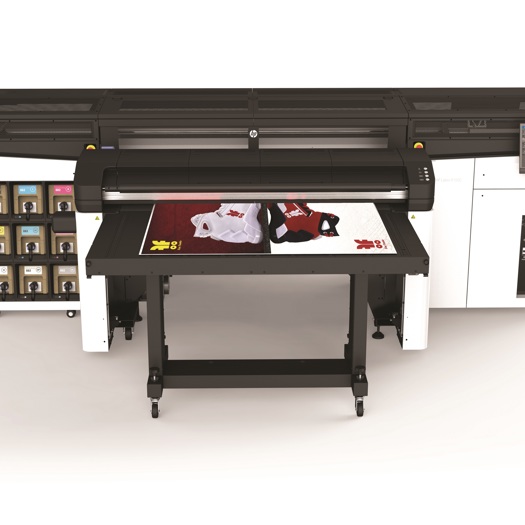Announcing the new technology yesterday (22 March) at the ISA Sign Expo in Orlando, Florida, the manufacturer said the new product family will mark the first, true hybrid Latex technology that merges HP’s flexible printing capabilities into rigid printing.
HP said the series will bring “unparalleled speed and quality” to a wide range of rigid materials, including foamboards, foam PVC, cardboard, fluted polypropylene, solid plastics, aluminium, wood, and glass among others.
The multi-pass technology will also bring the “most vibrant colours” into the area of rigid printing, HP said, based on internal testing it carried out in January 2018 comparing the technology to other competitive printers priced under $350,000 (£248,000).
New for this series is HP Latex White Ink, which the manufacturer said incorporates a system that recirculates the white ink to avoid settling. This is said to deliver glossy, high-quality “true white” that doesn’t yellow over time like traditional UV-based white ink does.
“White ink has been a consistent problem for the industry. Traditionally it uses bigger and heavier pigment particles that frequently clog printheads, or the opaque mixture becomes separated and settles to the bottom of the ink reservoir. Until now, physically shaking the reservoirs often has been the necessary solution,” said HP chief inkologist Thom Brown.
HP said its Latex inks deliver odourless prints that are safe for both the environment and operators. Prints are instantly dry as they come out of the printer and do not require degassing.
HP Large Format Graphics Business general manager Joan Perez Pericot said: “The signage and decoration market is where we play very successfully today with our Latex technology. Until now we have been only playing in the flexible part of this market and this is the first time we are going to address rigid applications with HP Latex technology.
“Customers have been asking us about having the same quality with rigid materials that they already have on the flexible side with Latex technology. When a print service provider is doing a campaign that needs both flexible and rigid, they were struggling a lot to have the same level of quality.”
He added: “We are going to have the vibrant colours that we have on the flexible side now in the rigid materials, which is probably the biggest disruption we are making and the biggest benefit of this new technology.
“When you print UV and then cure, it’s like you are painting the material so you completely hide the texture of the original material. Because of the way the Latex ink works, and being a water-based ink, we are preserving the touch and the look and feel of the substrate.
“With this technology, our customers can expand their offering into new, high-value applications while also opening fresh creative ideas and concepts for sign and display that provide their users greater value.”
HP said the Latex R Series will be available during Q3 2018, with a full industry debut set to take place at Fespa in Berlin, Germany in May.
Further details of the printers in the series, including technical specifications and pricing, are yet to be disclosed. It has also not yet been revealed whether the machines will take the form of roll-to-roll hybrids or dedicated flatbeds.










